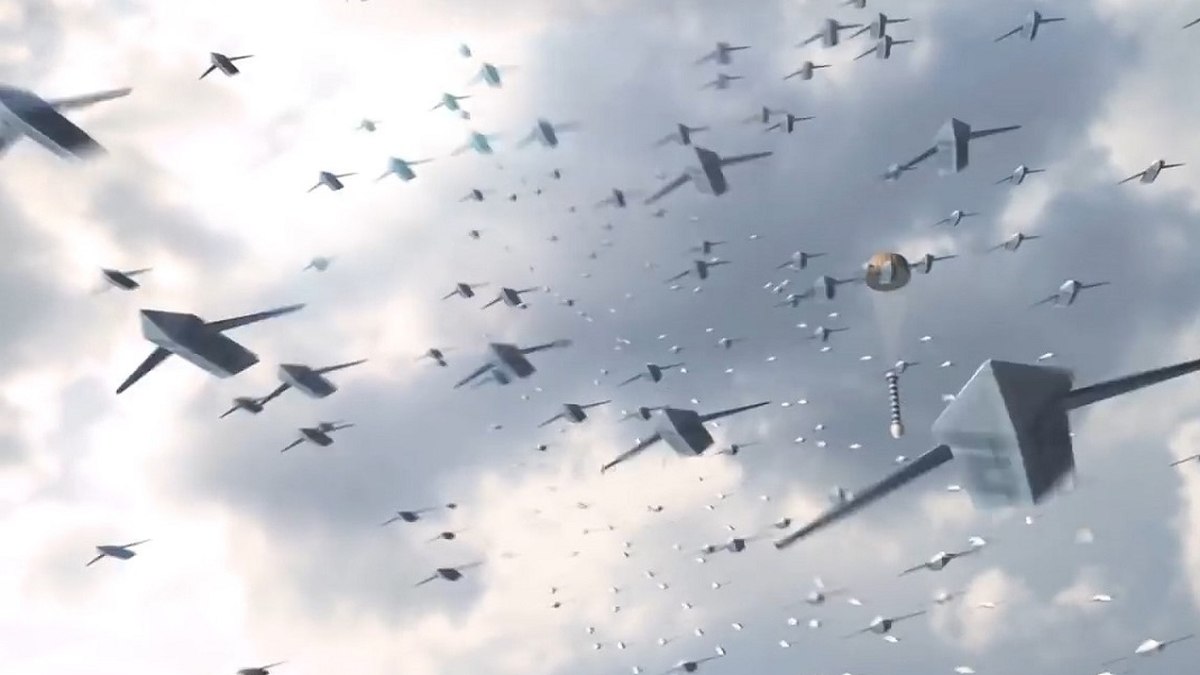WASHINGTON — The U.S. and India are working on development of a small, air-launched unmanned system that could be launched from cargo aircraft, according to Pentagon acquisition head Ellen Lord.
The systems are part of a broader technology effort known as the Defense Technology and Trade Initiative, or DTTI, which seeks opportunities for co-production and development of military technologies between the two countries.
Lord highlighted the drone project during a roundtable with reporters on March 15, a day after she hosted a delegation from India to discuss DTTI programs.
The UAV project — a collaboration between the Air Force Research Laboratory and India’s Defence Research and Development Organization — is a recent addition to the DTTI slate. The two organizations intend to write a technical planning document next month and then sign that plan during a meeting in New Delhi, which Lord will attend, tentatively planned for late September.
Lord declined to say if the program draws specifically from the Defense Advanced Research Projects Agency’s Gremlins program, which aims to launch and recover reusable drone swarms using manned airborne aircraft. However, she did indicate the systems could likely launch from aircraft operated by both nations, specifically the C-130J and C-17.
That program contains “potential” for Indian industry to take part in co-development of the system, which would have three targeted uses: humanitarian assistance and disaster relief, “cross-border operations,” and cave and tunnel inspection, Lord said. She added that the program could be “an efficient, cost-effective way to provide additional capability to the war fighter.”
Another DTTI program under development is a lightweight small arms technology project, which could reduce combined weapons and ammunition weight by about 40 percent. (That project involves U.S. industrial firm Textron Systems, which Lord led before joining the Pentagon; she clarified she does not take part in any specific discussions about that project aside from its broad involvement as part of the DTTI portfolio.)
“This is an area where there is co-development, as well as co-production opportunity, and that’s really what we’re interested in — technologies where the U.S. has brought them to a certain level and there’s an appetite for more investment, and for whatever reason we’re not able to get at that [in] the U.S. right now,” Lord said about that project.
Other long-gestating DTTI projects, such as India’s desire to procure the EMALS carrier launch technology, remain in rough stasis, although Lord expressed hope the September meeting could set hard timetables for moving forward in that area.
Indian bureaucracy has long entangled both the Pentagon and the American defense industry, and the DTTI program has certainly moved more slowly than was envisioned when it was launched by then-Deputy Secretary of Defense Ash Carter in 2012.
But Lord expressed optimism that the effort has finally turned a corner, thanks in part to Ajay Kumar, the secretary for defense production in the Indian Ministry of Defence. Kumar, Lord said, has been “very key” in getting the projects to move beyond just repeated meetings on the same topics — what Lord said was previously “death by PowerPoint.”
“What is different now is there’s been a lot of discussion and a lot of exchanges, [and] Dr. Kumar and I are saying we need to focus on deliverables with specific dates and really document what the objectives and the potential outcomes of the project are going to be,” she said, again noting that her September visit to India should coincide with putting a number of real deadlines and developmental milestones on the table.
The inclusion of industry trade groups, including two major groups based in India, has also helped get buy-in from Indian commercial enterprises, she added.





